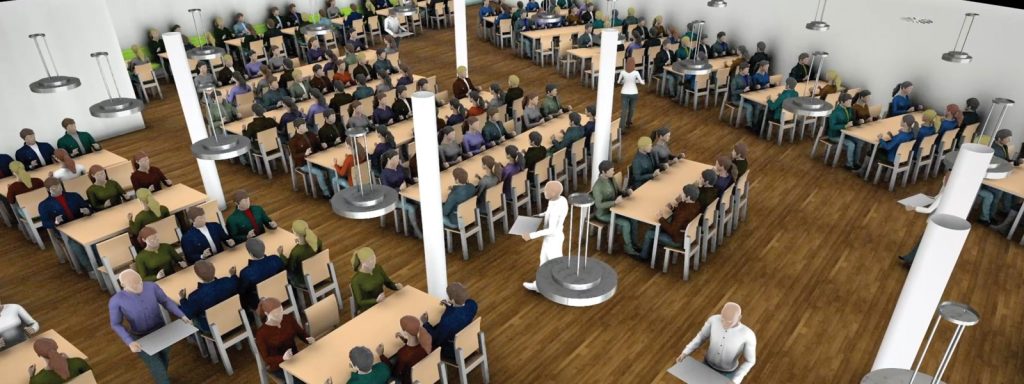As the world cautiously returns to a state of normality amidst the ongoing threat of the coronavirus pandemic, businesses face the added pressure of keeping both their workers and customers safe.
From the onset of the pandemic, GEA Group, one of the world’s largest suppliers of process technology to the food industry, has prioritized the welfare of its global workforce, leaning into the driving principle that connects its business: “Engineering for a better world.” This mission statement has taken on even greater significance for the business in recent months as it moves fast to protect its employees, reassure its customers and maintain a fully running logistics chain at all times.
Despite only having to temporarily close three of its global manufacturing sites, including one in China, GEA has been forced to keep its staff cafeterias out of action, including the popular facility in Oelde, Germany that is used by over 1,900 employees.

“Everyone goes here, it’s where we all get together to socialize and do business,” said Eric Nitzsche, vice president of Engineering Standards and Services at GEA. “We had to shut it down and clean it. But then you have to ask yourself the question, ‘how do I reopen it again safely?’. We needed a ramp-up strategy and to play out different scenarios to work out the best way of doing this.”
Mounting evidence showed that one of the main ways COVID-19 can spread is through aerosol transmission. For GEA, then, it became a priority to understand the scope of virus propagation through airflows in the cafeteria, and it consulted Dassault Systèmes to lead a simulation project.
Dassault Systèmes used 2D blueprints and photos to create an accurate digital twin of the cafeteria, including air vents and furniture, and used at-scale mannequins to create a realistic dining scenario. From there, it identified inlet and outlet air conditions and used vents documentation to simulate the right airflow behavior in the cafeteria.
The findings are compelling and surprised GEA’s management team, highlighting high-risk areas of the canteen they assumed would be safe, and giving them far deeper understanding of how fast and far the virus could spread in the cafeteria environment.
Now, with the detailed simulation results, GEA has a much clearer idea of the measures it must put in place to keep everyone safe when re-opening the cafeteria.
“We had the expectation that the results would be a basis for 20-30% of our decision,” Nitzsche said. “However, with the results that are now available, we have gained a confidence level of 60-70%. The simulation we have in our hands is very valuable in how we make decisions.”
Want to discover more about the simulation results and how they are helping GEA apply additional safety measures? Watch the video below or read the detailed case study.

